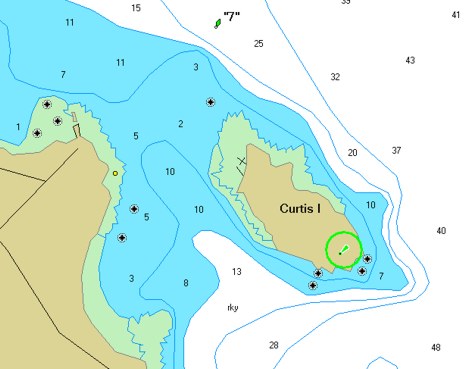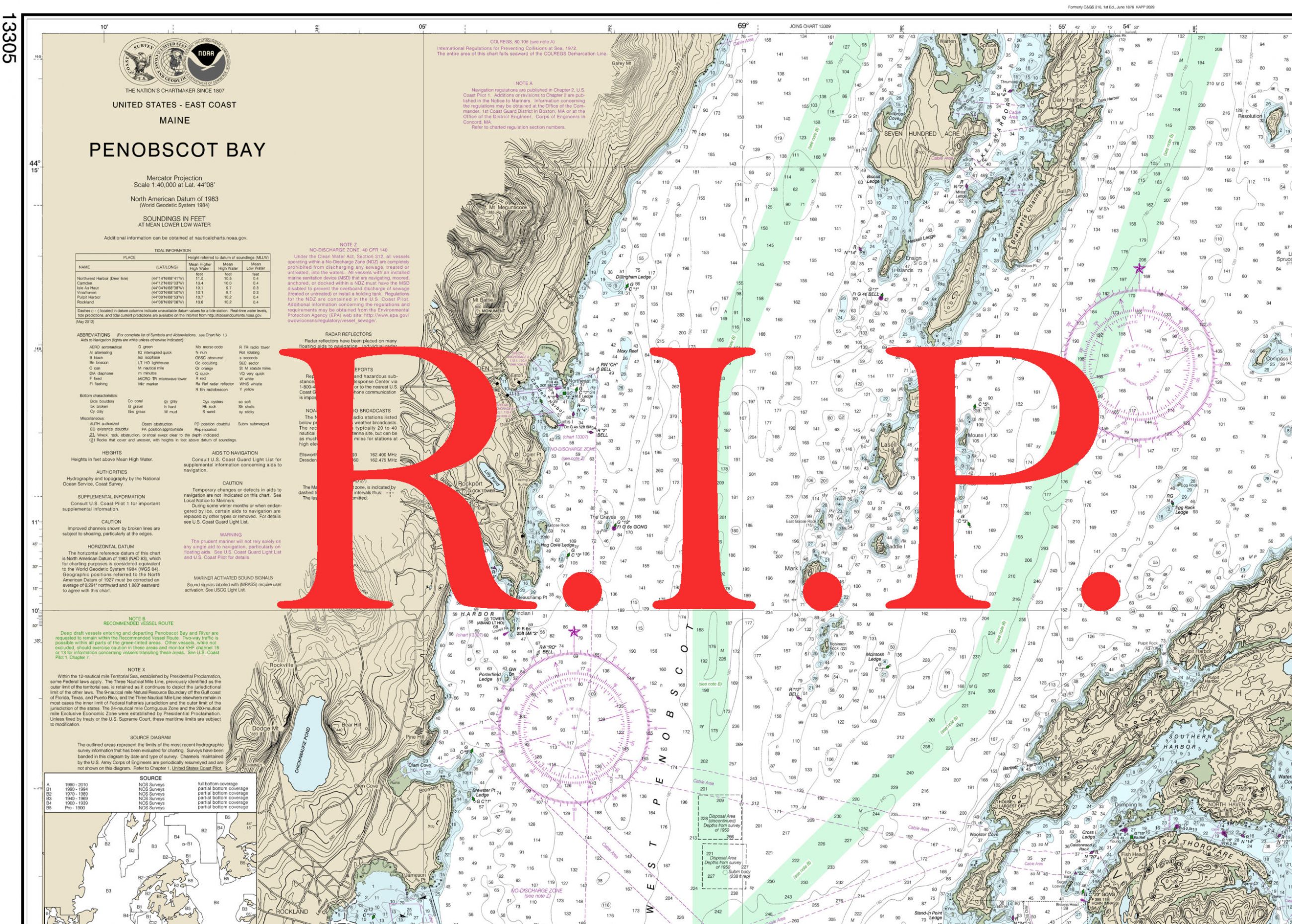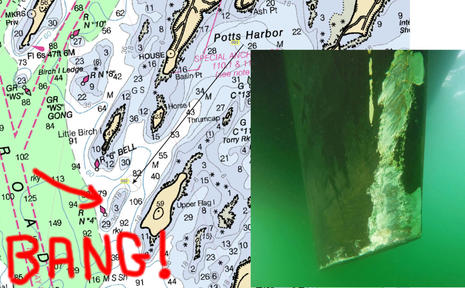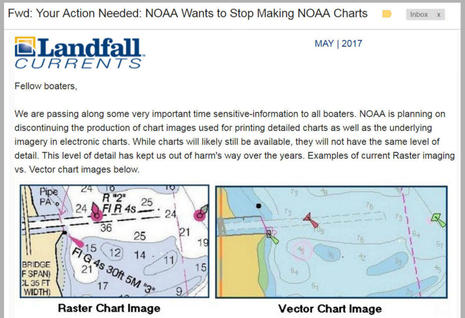“Obstructions that cover”, there’s more

Geez, I’ve got companies (and individuals) sending me screenshots to prove that their charts show the rocks in my harbor! That’s Garmin BlueChart on a PC above. You’ll notice it’s based on the 1:20,000 harbor chart, like the NauticPath I first showed, only the obstructions are clearly marked. (Garmin seems particularly big on this obstruction symbol, keeping them onscreen even as you zoom out). More good news: the rocks also show clearly on Navionics’ and C-Map’s vector charts, and on NOAA ENCs as displayed by Nobeltec and Fugawi, neither of which will even let you turn them off. Dennis Mills, developer of the very able Capn, told me the reason that some software, including his, can turn off the rocks is screwy but official S57/ENC object prioritization. But then, doh!, I discovered that the Capn is not showing the obstructions that cover symbol on at least some of the SoftChart style ENCs it uses, even when in the well-described “Full Navigation Info” mode. Mills was surprised, blamed the software they use to create the ENCs from the NOAA raw data, and signed off “we’re working on it!” I think MacENC is also working on making its rock display more conventional.
At any rate, I think we should all take a careful look at the different electronic chart types we use, perhaps especially the ENCs. Look hard, and send me examples of important details that are missing or badly presented. I doubt that anyone is tracing the paper charts perfectly, and even the paper charts have errors. For more inspiration, check out this C-Map Max image of Camden Harbor. It’s one of the nicest vector displays I’ve seen, and the rocks are right…but where the hell is the Curtis Island Light, the biggest navigation aid in the area? Doh! Have a nice weekend, but don’t completely trust any chart.














Problem is (in this case), the S-57 ENC data the rock is not tagged as an obstruction (most are) but instead as “nature of surface” (i.e. what’s the composition of the sea bottom). MacENC uses text to render the nature of surface (i.e. mud, sand, rock, gravel, grass, etc).
So it is an easy change to make the assumption that any rock that is in shallow water is also an obstruction and as such be rendered with the normal (*) graphic. The downside is that it may not actually be an obstruction, but instead just a rocky bottom.
As noted before the S-57 ENC specification does not make rules in regards how to render features. Only when features should be rendered are specified.
Hmmm…hard to understand this rational as I’ve just seen 3 other ENC viewing programs all recognize the rocks as (*) rocks. Is there any other viewer aside from MacENC that shows them as “nature of surface” (i.e. nature of bottom surface)? If you are using 3rd party software to interpret raw ENC files, as SoftChart and others do, could the problem be there? There is a serious difference between rocks that uncover and a rocky bottom.
Most likley those three viewers use the SevenC’s S-57 ENC reader. MacENC does not use this common reader because they do not offer a Mac version.
The next release of MacENC (releases come out on a monthly basis – all users receive them at no charge) will show “rocks” (Feature: Nature of Surface) that are in the shallow waters as the standard “*”. Not a big change to make.
MacENC works directly with the FREE public NOAA ENC data. That is the ENC data is not run through any third party translator. This is much preferred so chart updates are as simple as going to the NOAA ENC site and downloading them.